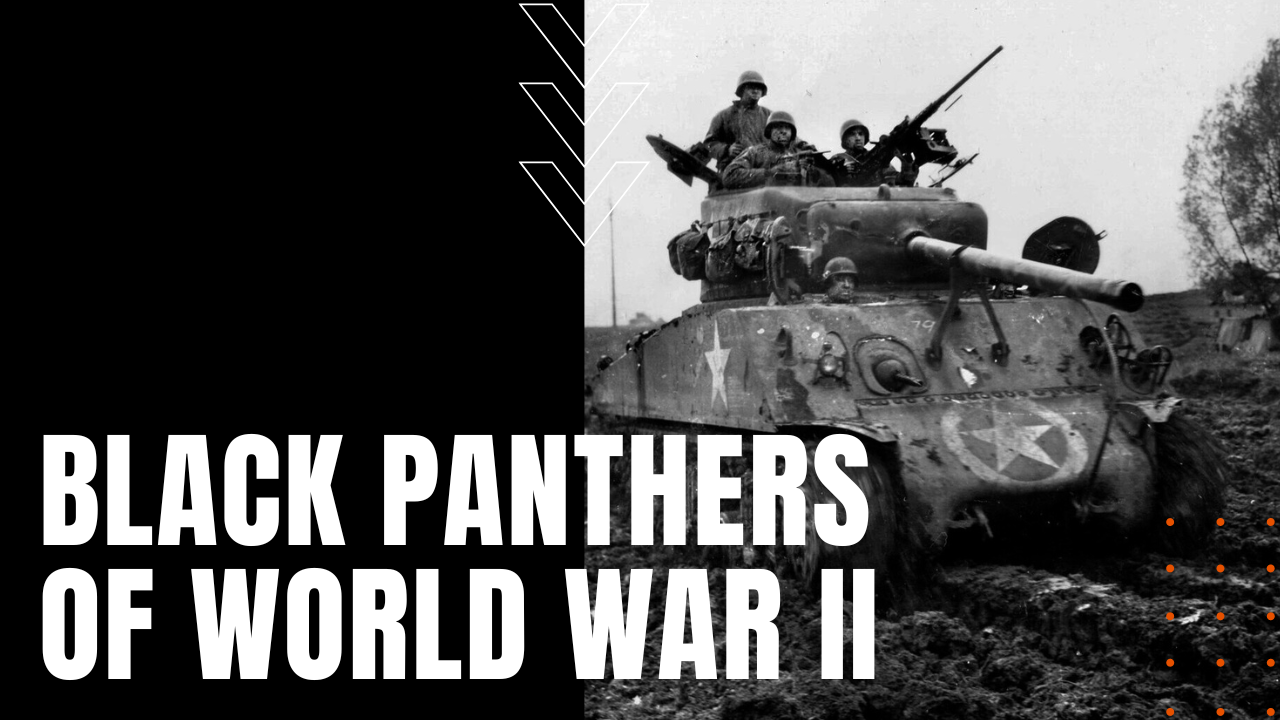The Black Panthers of WW2

Coming ashore at Omaha Beach on October 10th, 1944—minus future baseball Hall of Famer, Jackie Robinson, who was separated from the unit for refusing to move to the back of a segregated military bus—the 761st Tank Battalion, known as the Black Panthers, lived up to their motto of “Come out Fighting” on November 7th of that same year, attacking and capturing the German-held town of Morville-les-Vic in support of the 26th Infantry Division.
Heroes Despite White Prejudice
In an age of segregation in the U.S. military, the Black Panthers more than proved their meddle during their 183 days of continuous operational deployment. In November alone, the Black Panthers lost 24 men in combat, along with 81 wounded and 44 non-combat-related fatalities. With the German army on its heels by mid-December, 1944, after bouncing from one infantry division to the next, the Black Panthers were informed about the beginning of the Battle of the Bulge—Germany’s last-ditch effort to hold the Western Front by splitting Allied forces and capturing the Allies’ vital resupply port at Antwerp.
Deep in the Midst of War
Ordered to precede immediately to the southern tip of the Bulge at the town of Bastogne—a place in the Ardennes Forest where all roads converged—in conditions of night, fog and snow, the Black Panthers fought their way to the German’s vital resupply point at Tillet, engaging in a brutal attack on the German army’s flank, ultimately proving victorious in one of the most pivotal battles during Germany last significant offensive. On March 21st, 1945, Supreme Allied Commander Dwight D. Eisenhower commissioned Task Force Rhine, which included the Black Panthers and the 409th Infantry, with orders to break through the Siegfried Line and advance to the Rhine River in Germany.
Fighting Toward Germany
Considered the beginning of the end for Hitler’s military aggression in Europe, the 400-mile Siegfried Line was built to defend the Rhineland, with 18,000 interlocking bunkers and pillboxes connected by tunnels and roads, minefields and cement barriers known as dragon’s teeth, all of which made for gritty fighting for the 761st and the 409th. Achieving their goal on March 23rd, the Black Panthers continued the fight into Central Europe, all the way to VE Day on May the 8th, 1945. During the war, the Black Panthers received a Presidential Unit Citation for its important contribution in the Allies’ victory over Nazi aggression, along with one Medal of Honor, eleven Silver Stars and some 300 Purple Hearts, making the Black Panthers of of the 761st, one of the toughest fighting units of the Second World War.
